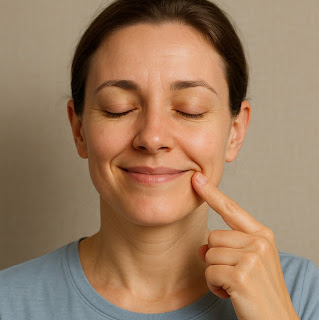Physical therapy exercises for facial palsy aim to improve muscle strength, coordination, and mobility in the affected areas of the face. Here are some common exercises recommended by physical therapists:
1. Facial Muscle Stretching:
Gently stretch the muscles on the affected side of the face to prevent contractures and improve flexibility. For example, gently pull the corners of the mouth upward into a smile, then hold for a few seconds before relaxing.
2. Facial Massage:
Use gentle massage techniques to stimulate blood flow, reduce tension, and improve muscle tone. Massage the affected side of the face using circular motions with your fingertips or a soft cloth.
3. Facial Muscle Strengthening:
Perform resistance exercises to strengthen weakened facial muscles. For example, place your fingertips against your cheek or forehead and try to smile or raise your eyebrows against the resistance of your fingers.
4. Eye Exercises:
Since individuals with facial palsy may have difficulty closing their affected eye, eye exercises are important to prevent dryness, irritation, and corneal damage. Practice blinking and closing the affected eye regularly throughout the day, and use lubricating eye drops as needed.
5. Tongue Exercises:
Tongue exercises can help improve control and coordination of facial muscles involved in speech and swallowing. Stick out your tongue and try to touch the corners of your mouth, nose, and chin, or move your tongue from side to side.
6. Cheek Puffing:
Inflate your cheeks with air and hold for a few seconds before releasing. This exercise helps strengthen the muscles around the mouth and improve lip control.
7. Symmetrical Facial Movements:
Practice symmetrical facial movements to improve coordination and balance between both sides of the face. For example, raise both eyebrows simultaneously, puff out both cheeks, or smile with both sides of the mouth.
8. Mirror Exercises:
Use a mirror to visually guide and monitor facial movements. Mimic various facial expressions and movements seen in the mirror to help retrain and regain control over facial muscles.
It's essential to perform these exercises consistently and under the guidance of a qualified physical therapist to ensure safety and effectiveness. They can tailor a personalized exercise program based on your specific needs, abilities, and stage of recovery. Additionally, always consult with your healthcare provider before starting any new exercise regimen, especially if you have underlying medical conditions or concerns.








Comments
Post a Comment